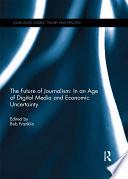
Becoming a Public Relations Writer Instructor's Manual
A Writing Process Workbook for the Profession
Using no-nonsense language, realistic examples, easy-to-follow steps and practical exercises, this book guides students through various types of public relations writing. A focus on ethical and legal issues is woven throughout, with examples and exercises that deal with public relations as practiced by corporations, non-profit agencies, and other types of organizations large and small. In addition, the book addresses the most comprehensive list of public relations writing formats to be found anywhere--from old standbys like news releases to electronic mail and other opportunities in new technologies. Laying the foundation for an integrated approach that touches on public relations advertising and direct mail, this second edition is divided into four parts. Part I deals with principles of effective writing useful in all disciplines. Part II focuses on news as the bridge an organization can build to its various publics. Part III takes you through a variety of writing formats and environments that provide an internal or controlled approach. Part IV is the wrap up that pulls together the various writing styles presented in this book as part of an integrated communication package. Becoming a Public Relations Writer is a different kind of textbook for college and university students. It provides writing instruction for people preparing to enter the profession and guides students with models and step-by-step patterns designed to increase competence and build confidence in students on their way to becoming public relations writers.
- ISBN 13 : 1135466343
- ISBN 10 : 9781135466343
- Judul : Becoming a Public Relations Writer Instructor's Manual
- Sub Judul : A Writing Process Workbook for the Profession
- Pengarang : Ronald D. Smith,
- Kategori : BUSINESS & ECONOMICS
- Penerbit : Routledge
- Bahasa : en
- Tahun : 2013
- Halaman : 296
- Halaman : 296
- Google Book : http://books.google.co.id/books?id=4e-NAQAAQBAJ&dq=intitle:Public+Relations+Writing&hl=&source=gbs_api
-
Ketersediaan :
Using no-nonsense language, realistic examples, easy-to-follow steps and practical exercises, this book guides students through various types of public relations writing.









